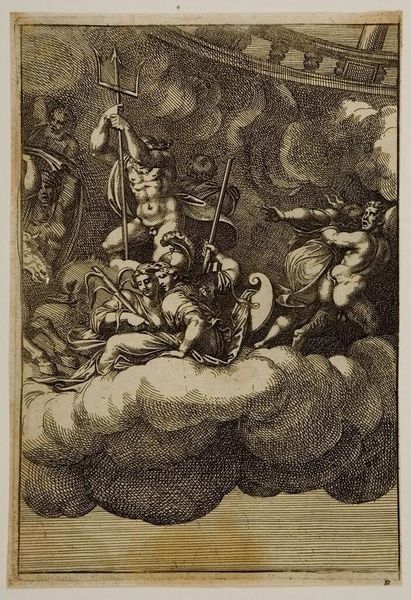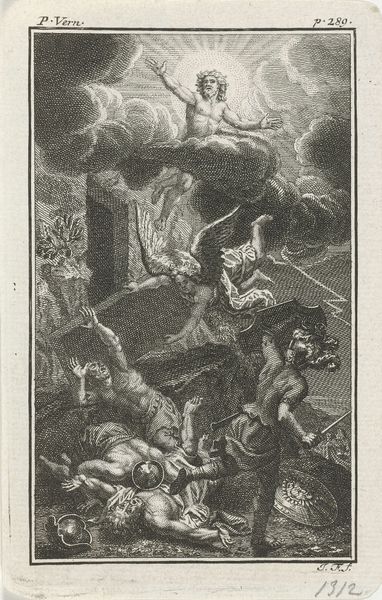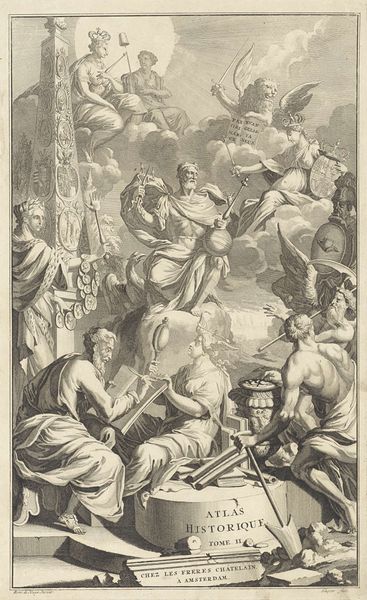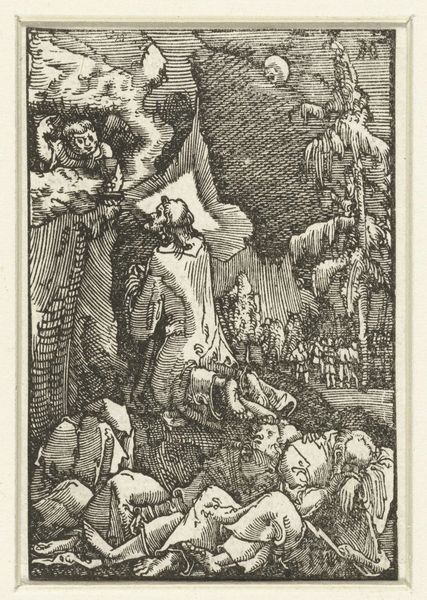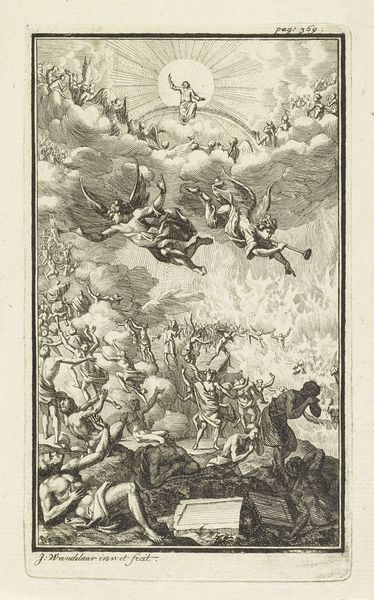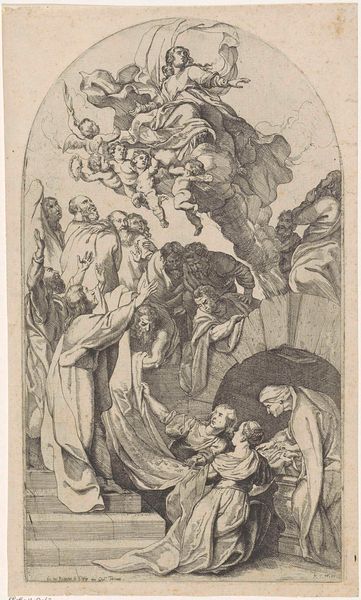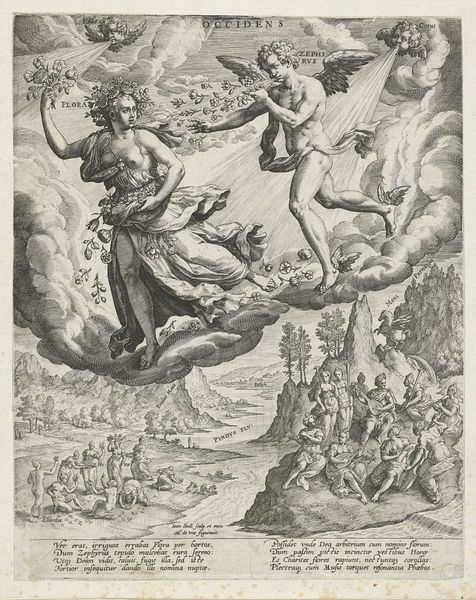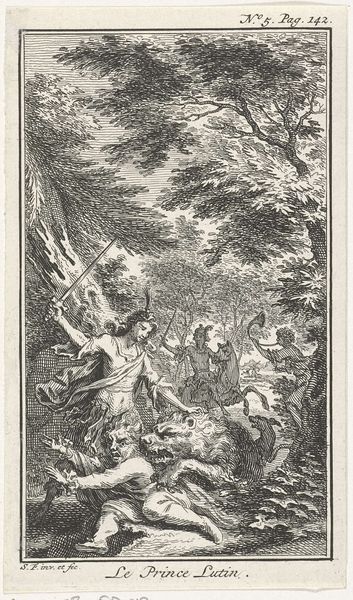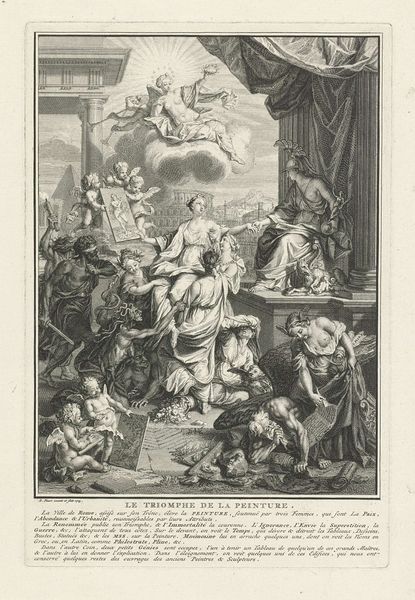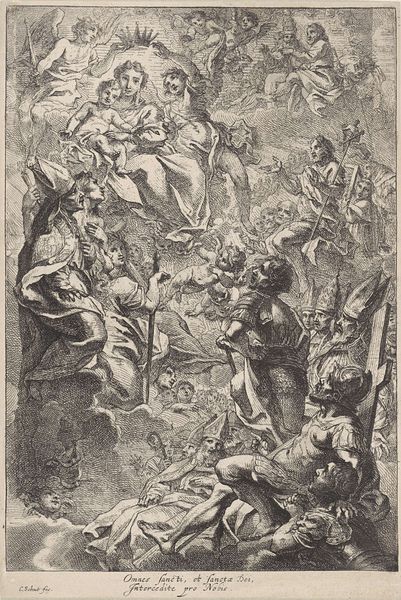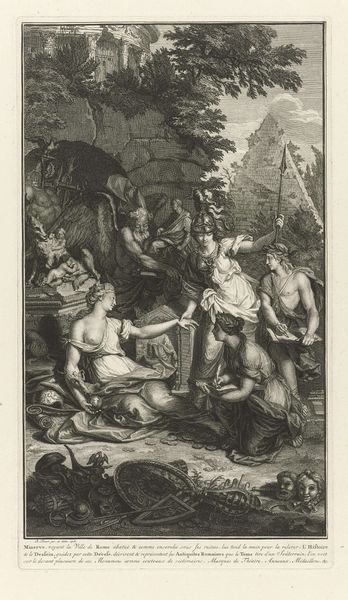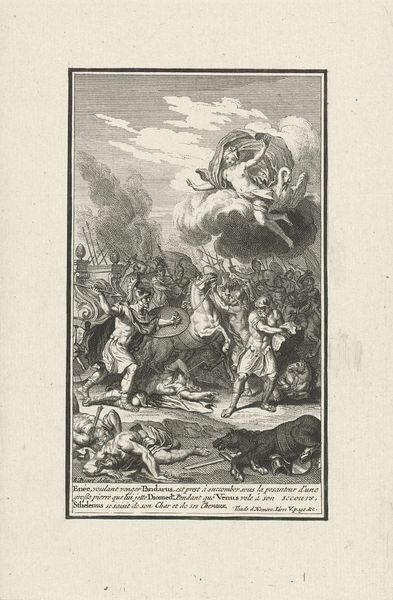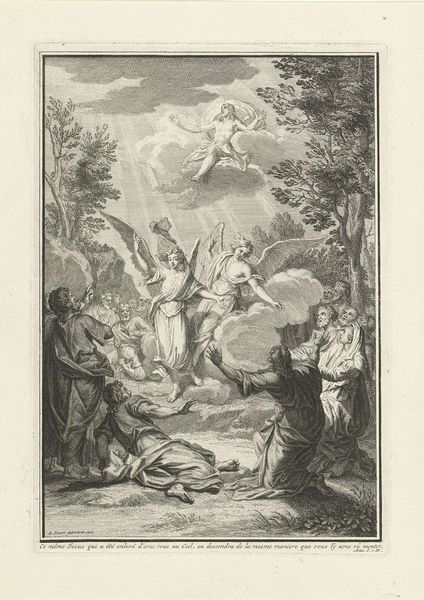
engraving
#
ink drawing
#
allegory
#
baroque
#
pen illustration
#
pen sketch
#
landscape
#
figuration
#
line
#
history-painting
#
engraving
Dimensions: width 97 mm, height 154 mm
Copyright: Rijks Museum: Open Domain
Gaspar Bouttats made this small allegory on the fleeting nature of life as an etching sometime before 1695. It’s a complicated image, full of classical figures and symbolic meaning. Etchings like this one were commonly made in the Netherlands to accompany poems, and frequently to convey moral or religious lessons. We can see Father Time’s face looming in the background. In the foreground a seated figure, possibly Circe, prepares a potion in a large vase. This intoxicating mixture is being offered to children, while bubbles float in the air, no doubt alluding to the ephemeral pleasures of life. The transience of the material world is a recurring theme in art of this period. This small etching would have been a way to bring awareness of these concerns into a private, domestic sphere. To learn more, examine the print collections of the Rijksmuseum to compare it to similar images, or investigate the popular poetry of the period to see what verses this etching might have accompanied.
Comments
No comments
Be the first to comment and join the conversation on the ultimate creative platform.
